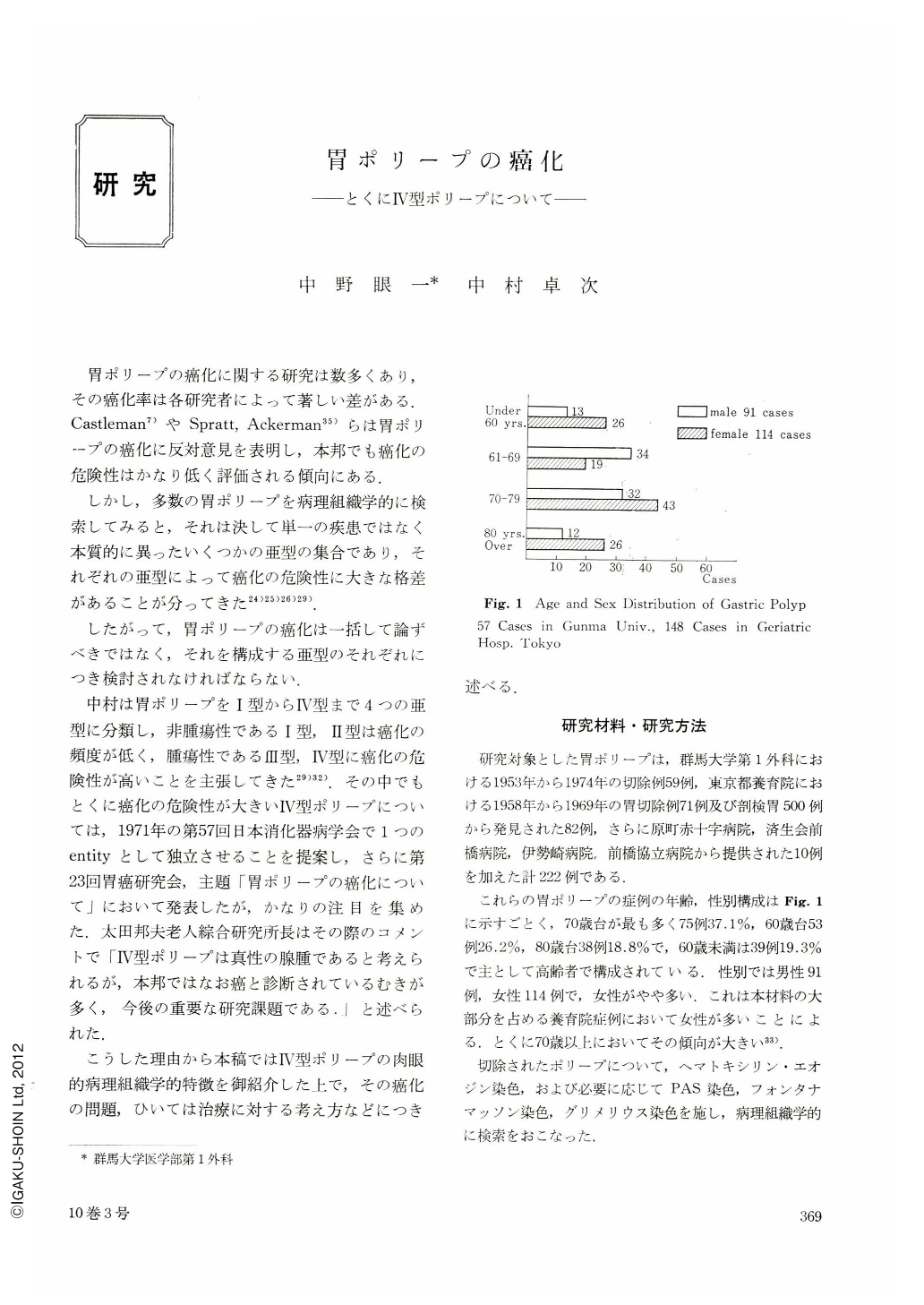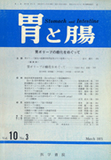Japanese
English
- 有料閲覧
- Abstract 文献概要
- 1ページ目 Look Inside
胃ポリープの癌化に関する研究は数多くあり,その癌化率は各研究者によって著しい差がある.CastlemanやSpratt,Ackermanらは胃ポリープの癌化に反対意見を表明し,本邦でも癌化の危険性はかなり低く評価される傾向にある.
しかし,多数の胃ポリープを病理組織学的に検索してみると,それは決して単一の疾患ではなく本質的に異ったいくつかの亜型の集合であり,それぞれの亜型によって癌化の危険性に大きな格差があることが分ってきた.
Histopathological study was carried out on 222 cases of gastric polyps including 69 cases of Gunma University and 153 cases of the Geriatric Hospital attached to Tokyo Municipal Home for the aged which were removed surgically or autopsied. As the result of this study, gastric polyps were revealed as not of uniform lesions but as consisted of several subtypes which were classified as Type Ⅰ, Ⅱ, Ⅲ and Ⅳ.
Type Ⅰ polyp was the most common type which occupied 66.8% of all gastric polyps in this series, and were usually pedunculated and solitary in number. Histologically they are composed predominantly of non-atypical and hyperplastic gland ducts similar to gastric foveolae.
Type Ⅱ polyp were usually multiple and distributed in the distal fundic region, and were hemispherical and slightly depressed at their tips, Onionskin like core in the central portion of the polyp was one of the histological characteristrcs of Type Ⅱ polyp. This type occupied 15.6% of all gastric polyps.
Type Ⅲ polyp were generally sessile and flowerbed like. Two layer structure is one of the histological charactenstics of this type. Darkish stained, vertically arranged atypical glands were observed in the upper layer and many cysts and somewhat hyperplastic glands were recognized in the lower layer. This type occupied 22.7% of this series. Though Type Ⅲ polyp were composed of atypical intestinal type epithelia, their histological appearance was much different from the adenoma of the colon.
On the contrary, Type Ⅳ polyp was similar to the adenoma of the colon in the shape and the histological appearance. They were usually pedunculated and papillary in the surface and showed a papillary histological appearance much similar to that of adenoma of the colon. This type occupied only 7.1% of this series, and was the fewest of four types. But they showed the highest malignant potentiality in these four types.
The incidence of malignant changes were observed in Type Ⅰ in 2.1% Type Ⅱ, zero, Type Ⅲ, 14.6%, and Type Ⅳ, 26.7%. Type Ⅰ and Ⅱ polyps were considered as non-neoplastic and malignant change have been seldom demonstrated in these groups. Type Ⅲ and Type Ⅳ polyps were cosidered as neoplastic and malignant changes were more common in these groups.
Ming classified gastric polyps into two groups, one of them was regenerative polyp and the other was adenomatous polyp. Type Ⅰ corresponds to his regenerative polyp and Type Ⅳ dose to his adenomatous polyp. Although Type Ⅳ polyp was not common in Japan, another type of adenoma (Type Ⅲ) was rather common in Japan and was considered to be extremely uncommon in the United States and in Europe.

Copyright © 1975, Igaku-Shoin Ltd. All rights reserved.


